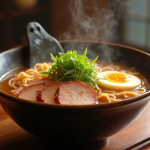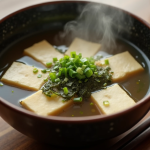Setting a Japanese-style table at home isn’t just about plates and bowls. It’s about bringing calm, balance, and beauty into your daily meals. This tradition is rooted in centuries of culture where every item, from the chopsticks to the soup bowl, has its place and meaning.
You don’t need a fancy dining room or expensive tableware. What you need is intention. Whether you’re planning a quiet dinner or impressing guests, this guide will walk you through everything you need to serve a Japanese meal at home—with respect for its roots and ease for beginners.
The Heart of Japanese Table Setting
At the core of Japanese table setting is the idea of harmony. This includes balance in color, shape, nutrition, and presentation. Meals follow the ichiju-sansai rule: one soup, one main dish, and two side dishes, usually served with rice and pickles.
This isn’t about filling the table with food. It’s about creating a well-balanced meal that’s satisfying but not overwhelming.
Japanese aesthetics often follow wabi-sabi—the appreciation of simple, imperfect, and natural things. Your plates don’t need to match. The key is how you arrange them.
Essential Tableware for a Japanese Meal
To set a Japanese-style table, you only need a few basic items:
- Rice bowl – usually ceramic or porcelain, smaller than Western bowls
- Soup bowl – often lacquered wood, with a lid to keep the soup warm
- Flat plate or small tray – for the main dish
- Side dish plates – two small plates or bowls
- Chopsticks – with a holder to rest them on
- Sauce dish – for soy sauce or dipping
You can find affordable sets online or mix and match pieces from your kitchen. Natural textures like wood, bamboo, or ceramic work best. Avoid plastic or anything too colorful or shiny.
How to Arrange a Japanese Table
In Japanese dining, placement matters. It’s a quiet form of respect—for the food, the cook, and the person eating. Here’s the basic layout:
- Rice bowl – front left
- Soup bowl – front right
- Main dish – at the back, centered
- Side dishes – one left, one right, behind the rice and soup
- Chopsticks – horizontally in front of everything, with the tips pointing to the left
This layout is traditional and intuitive. It keeps warm items within reach and balances the visual weight of the meal.
Adding Atmosphere: Setting the Mood
Japanese dining is not just about food. It’s about the full experience. The setting should feel calm and uncluttered.
Here are a few easy touches:
- Use bamboo placemats or fabric runners instead of Western-style tablecloths
- Add a small seasonal flower, like a sprig of cherry blossom or maple leaf
- Keep lighting soft—use warm-toned bulbs or candles
- Use ceramic or stone dishes in natural colors: white, beige, black, or soft blues
- Turn off the TV or loud music. Quiet or soft instrumental music is better
These small details help create a space where the meal feels special, even if it’s just a weeknight dinner.
Tips for Serving a Japanese Dinner at Home
Even without traditional ingredients or cookware, you can still serve a beautiful Japanese-style meal.
Start simple:
- Miso soup with tofu and scallions
- Grilled salmon or teriyaki chicken
- Steamed white rice
- Pickled cucumbers
- A side of spinach with sesame dressing (goma-ae)
Use what you have. Serve miso soup in a small bowl with a lid or cover it with a small plate. If you don’t have chopsticks, use wooden utensils. The key is the arrangement and balance, not strict rules.
You can also shop online for basic Japanese tableware. Many home stores offer starter sets that include rice bowls, chopsticks, and small plates.
What Not to Do: Cultural Notes to Respect
Japanese table manners are simple but important. Even at home, try to follow these rules:
- Never stick chopsticks upright into rice—it resembles a funeral ritual
- Don’t cross chopsticks or place them directly on the table
- Avoid overloading the table or using large Western-style plates
- Don’t mix all the food together on one plate—each dish deserves its space
These traditions may seem small, but they carry meaning and show care for the food and the culture.
Real-Life Example: A Family Dinner in Tokyo
In many Japanese homes, dinner is served on individual trays. Each family member has their own set of dishes, neatly arranged. The mother or cook may spend time thinking about colors, textures, and seasonality.
A fall dinner might include grilled mackerel with grated daikon, a bowl of miso with mushrooms, steamed rice, and pickled eggplant. A small chrysanthemum sits in a glass on the table. It’s not fancy, but it feels thoughtful and calm.
That’s the essence of Japanese table setting.
Final Thoughts
Setting a Japanese table at home isn’t hard. It doesn’t take expensive tools or deep knowledge of the culture. It’s about mindfulness, simplicity, and respect. When you serve a meal with care—arranged with balance and beauty—it changes the whole experience.
So the next time you cook, try setting your table the Japanese way. You might find it brings more than flavor to your meal. It brings peace, too.





